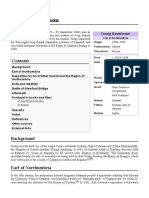0% found this document useful (0 votes)
28 views7 pages60 Frontend Vs Backend Vs Database
The document explains the roles of frontend, backend, and database in a web application, using a simple web form project as an example. It details the technologies used (HTML, Flask, MySQL) and outlines the process of collecting user data, processing it, and storing it in a database. Additionally, it provides an analogy, project structure, code snippets, and guidance on how to present the project in a resume or interview.
Uploaded by
freefirecsk1Copyright
© © All Rights Reserved
We take content rights seriously. If you suspect this is your content, claim it here.
Available Formats
Download as PDF, TXT or read online on Scribd
0% found this document useful (0 votes)
28 views7 pages60 Frontend Vs Backend Vs Database
The document explains the roles of frontend, backend, and database in a web application, using a simple web form project as an example. It details the technologies used (HTML, Flask, MySQL) and outlines the process of collecting user data, processing it, and storing it in a database. Additionally, it provides an analogy, project structure, code snippets, and guidance on how to present the project in a resume or interview.
Uploaded by
freefirecsk1Copyright
© © All Rights Reserved
We take content rights seriously. If you suspect this is your content, claim it here.
Available Formats
Download as PDF, TXT or read online on Scribd
/ 7





















































































